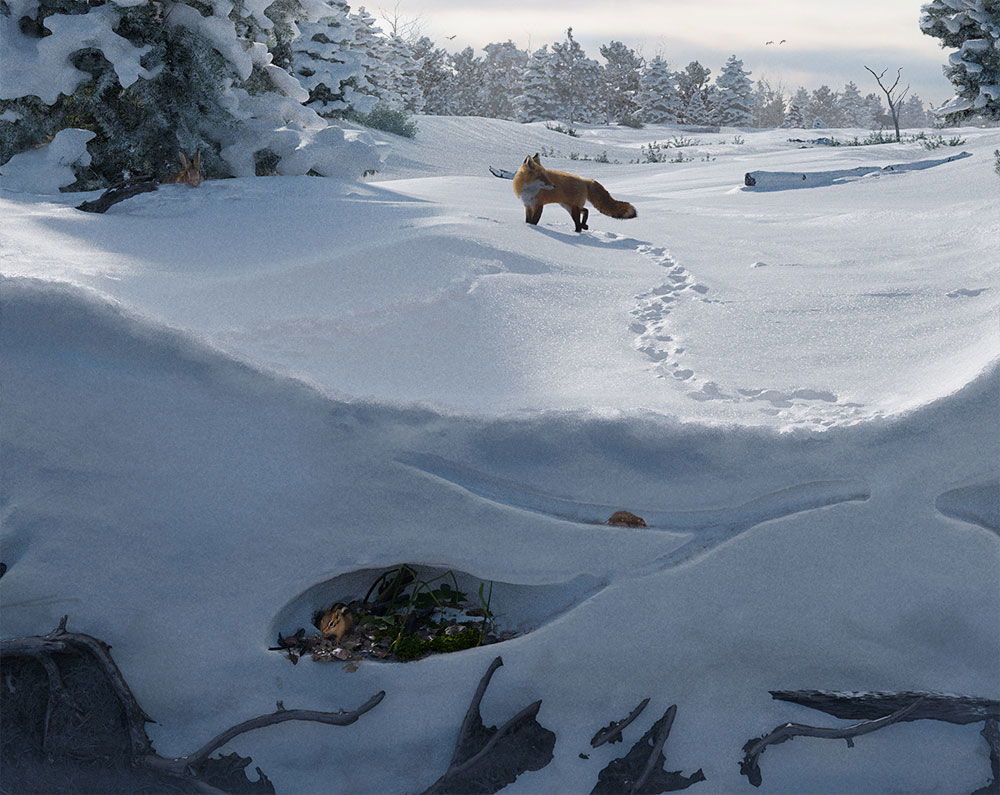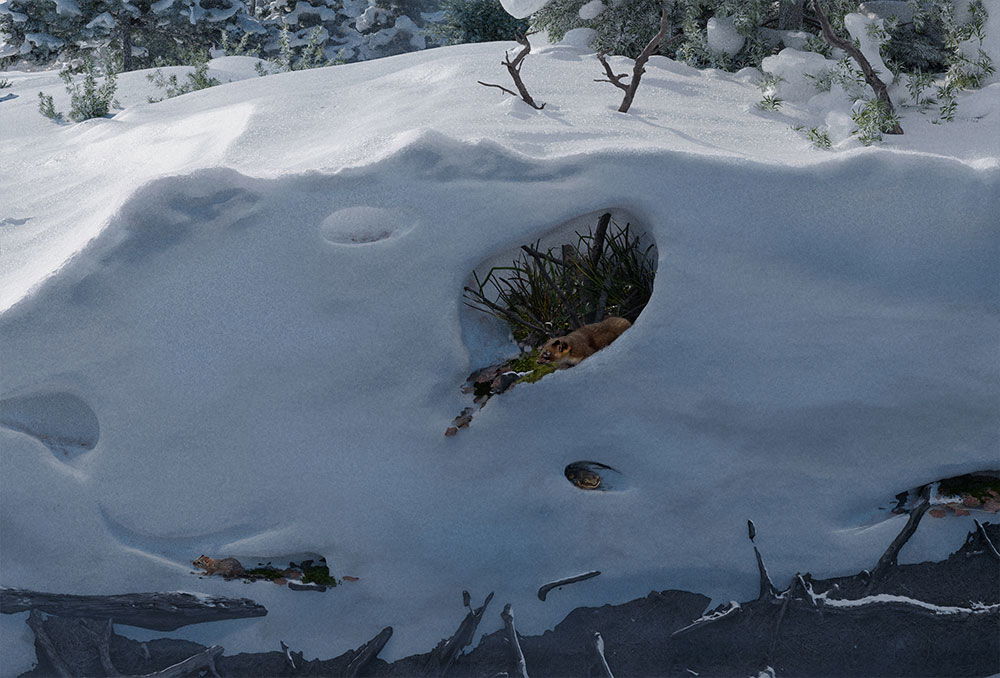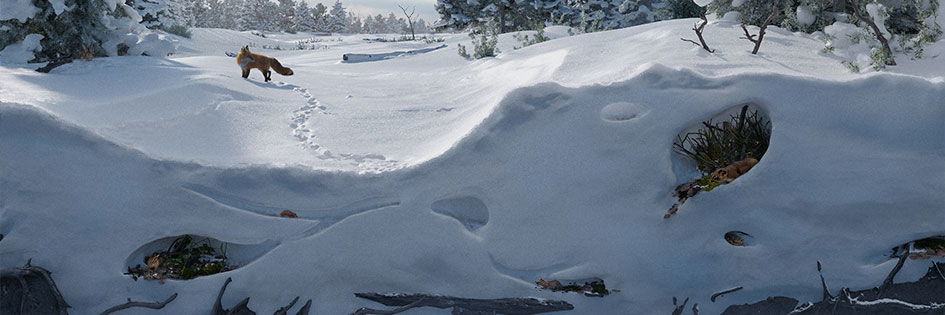Sanctuary in the Snow
When a fresh snowfall blankets the world, we retreat indoors to the warm shelter of our homes. But where do wild animals take shelter from the cold? Beneath the mantle of white lies a hidden retreat, a secret ecosystem where plants and animals continue to survive and thrive through the colder months.
This natural igloo, called the subnivium (from the Latin sub for under and nivis for snow), exists between the snowpack and the ground. The subnivium is insulated by the snow to maintain a constant temperature of 32°F (0°C)—often warmer than the temperature above ground. But not all animals that live and move within this snowy shelter hunker down for the winter. Many actively forage and hunt.
So this winter, when you peer out the window at a snowy landscape that seems cold and uninviting, remember that God created the world to be inhabited. Despite how the fall and the flood altered the environment, God designed animals and plants to adapt. Even seemingly inhospitable environments display the proliferation of life here in God’s creation, where every creature has a home.
Formation
The ground must be covered in at least 6 inches (15 cm) of snow for the subnivium to take shape and stay insulated enough for animals to live within its icy walls. As snow accumulates, rocks, vegetation, and fallen branches hold the snow in uneven patterns, creating pockets of space underneath. The soil beneath the snow maintains a warmer temperature. As snow melts, the water vapor rises into the snowpack and refreezes, forming an icy roof.
Depending on the conditions, the subnivium can range in size from a small pocket of air to a large network of connecting tunnels. As animals move within its walls, the lively lair expands.

- Hardy plants provide food for small rodents which forage for grasses, bark, and seeds within the subnivium’s spaces.
- Soil-dwelling insects such as springtails, beetles, flies, and spiders thrive, insulated by the snow.
- Foxes, wolverines, owls, and other predators listen for movement and pounce or dive into the snow to capture prey.
- Voles construct entire homes in their snow shelter, with rooms for eating, sleeping, and relieving themselves.
- Even some birds burrow into the snow for a warm place to roost away from predators.

- Weasels easily slip through the snow tunnels to hunt for voles and mice.
- The wood frog freezes two-thirds of the water in its body, living in suspended animation until spring.
- Some fungi thrive within the subnivium, decomposing organic matter and providing plants with increased carbon dioxide.
- Air pockets form around plants that poke up out of the snow, supplying oxygen for the inhabitants down under.
References
Nicholson, Noelle. “A Show Below the Snow: The Subnivium.” Boulder County Open Space, December 1, 2022. https://bouldercountyopenspace.org/i/science/a-show-below-the-snow-the-subnivium/.
Pike, Susan. “The Secret Winter Life of Mice and Voles.” Seacoast Online, January 24, 2018. https://www.seacoastonline.com/story/news/2018/01/24/the-secret-winter-life-mice/16017426007/.
Mayer, Melissa. “Secrets of the ‘Subnivium’: Arthropod Community Thrives Beneath Winter Snowpack.” Entomology Today, May 8, 2024. https://entomologytoday.org/2024/05/08/subnivium-arthropods-winter-snowpack-climate-change/.
Answers Magazine
January–March 2024
As God’s special creation, humans possess the gift of language—but animals also have something to say!
Browse IssueRecommended Resources

Answers in Genesis is an apologetics ministry, dedicated to helping Christians defend their faith and proclaim the good news of Jesus Christ.
- Customer Service 800.778.3390
- Available Monday–Friday | 9 AM–5 PM ET
- © 2025 Answers in Genesis





